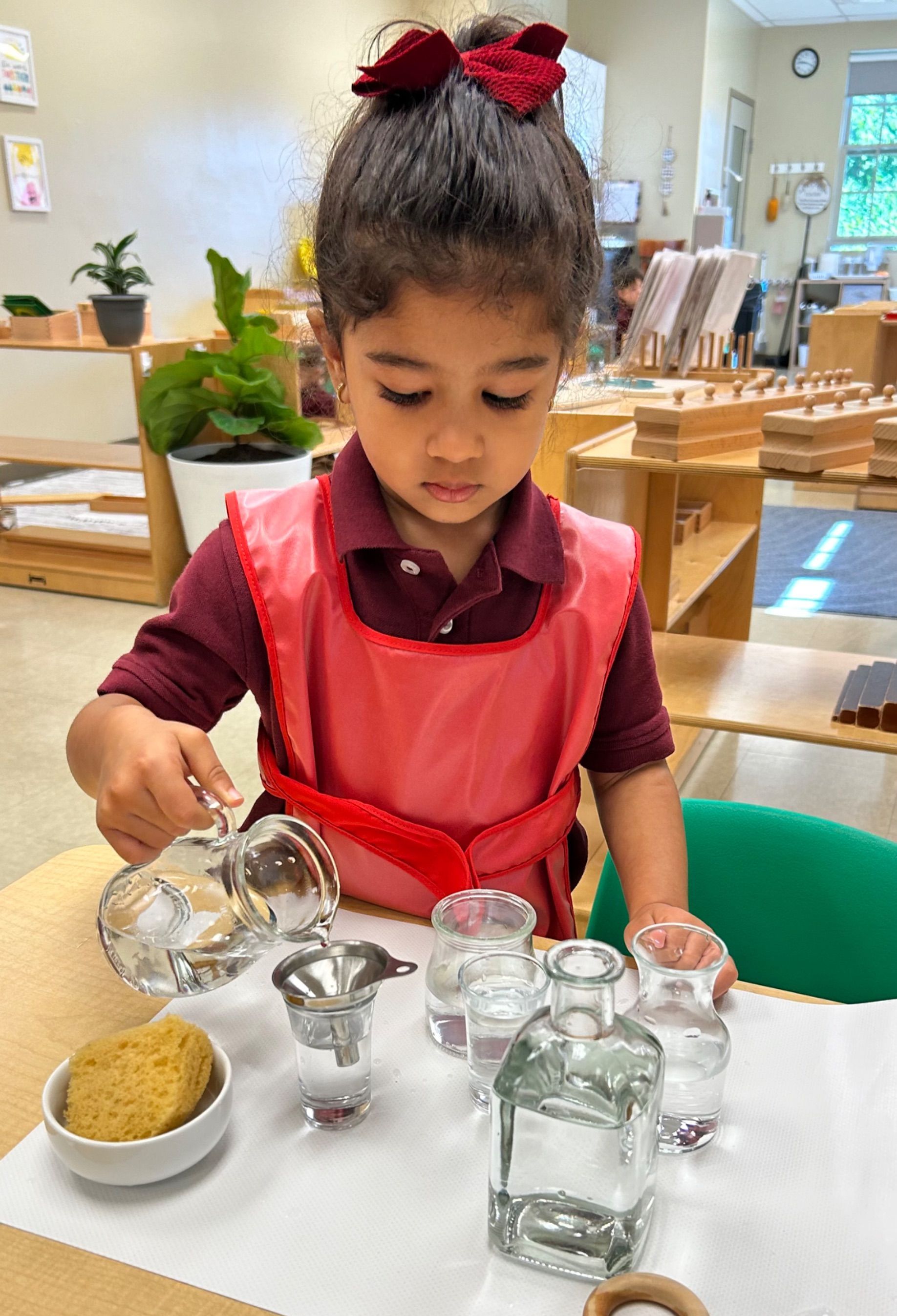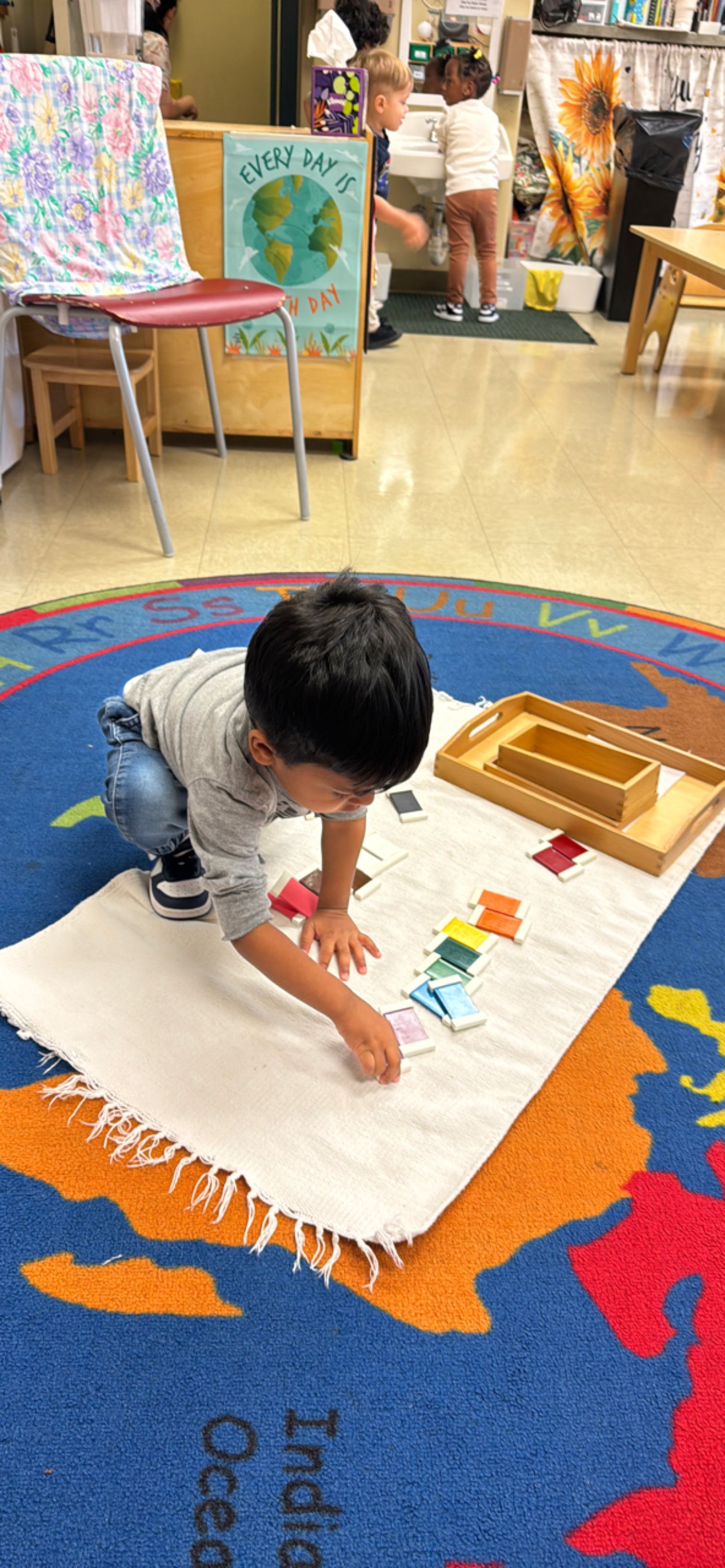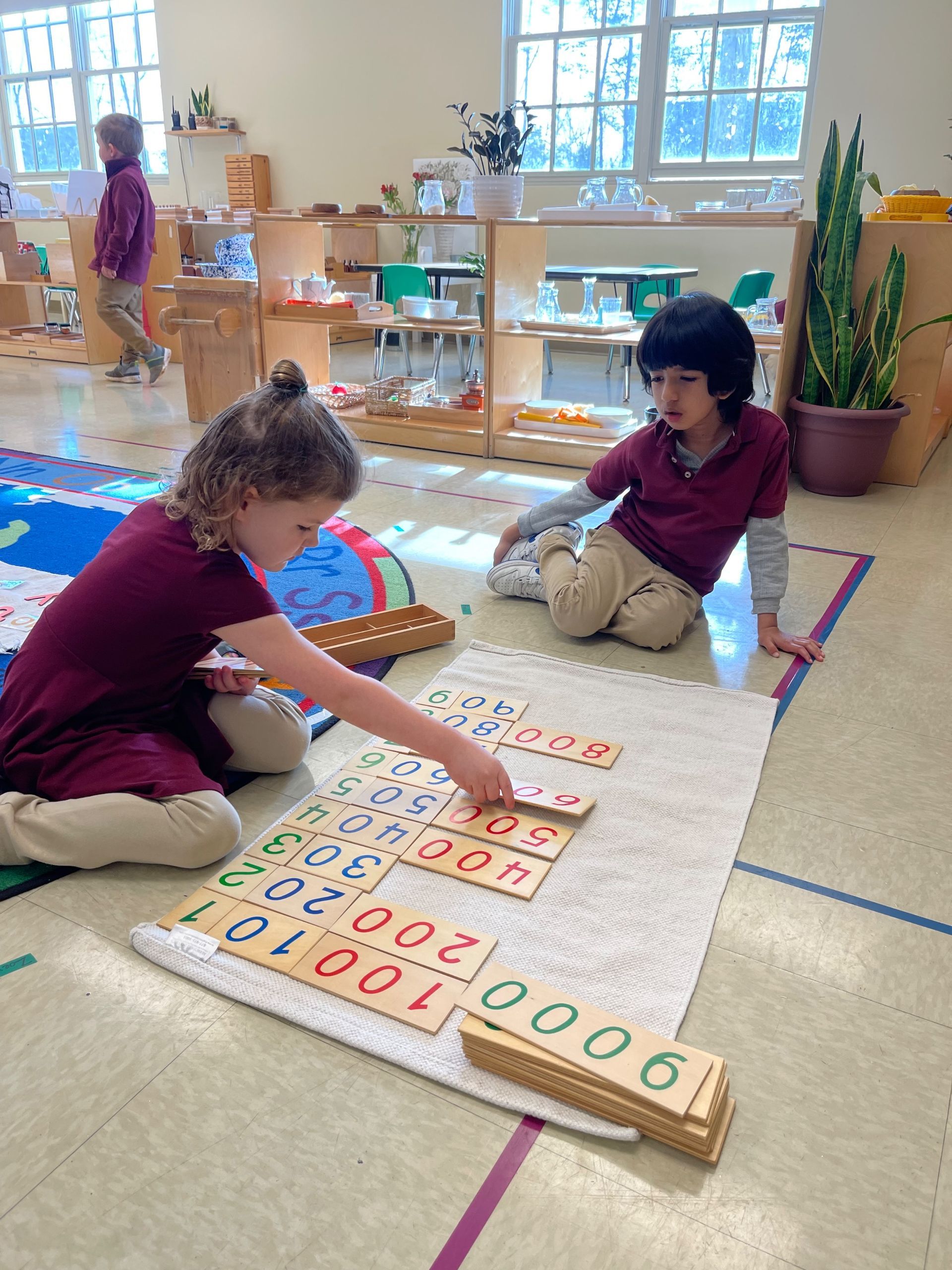Montessori Education vs. Traditional Education
Montessori Education – A Montessori school is founded in self-direction and cooperative activities that nurture a child’s self image, elevated levels of academic and social competence as well as the confidence to overcome challenges with optimism. Encouraged to make decisions from an early age, Montessori children are naturally curious problem-solvers who learn to choose wisely, manage time effectively and work well with one another. These children, at a young age, will exchange ideas and discuss their work together. The emphasis on positive communication skills builds a strong foundation for learning through life.
Values
Montessori Education
- The child is viewed holistically, valuing cognitive, psychological, social and spiritual development
- Values concentration and depth of experience; supplies uninterrupted time for focused work cycle to develop
- Grace, courtesy and conflict resolution are integral parts of daily Montessori peace curriculum
- Care of self and environment are emphasized as integral to the learning experience
- Child learns to share leadership; egalitarian interaction is encouraged
- GOAL: Foster a love of learning
Traditional Education
- Views the child in terms of competence, skill level, and achievement with an emphasis on core curricula standards and social development
- Values completion of assignments; time is tightly scheduled
- Conflict resolution is taught independently from classroom activity
- Less emphasis placed on self care, special awareness, and care of the environment
- Hierarchical classroom structure is prominent
- GOAL: Master core curricula objectives
Learning Process
Montessori Education
- Carefully prepared learning environment and method encourages development of internal self discipline and intrinsic motivation
- Child is an active participant in learning: allowed to move about and respectfully explore the classroom environment; teacher is an instructional facilitator and guide
- Learning is reinforced internally through the child’s own repetition of an activity and internal feelings of success
- Child is allowed to spot her own errors through feedback from materials; errors are view as a part of the learning process
- Child can work where he is comfortable and often has choices between working alone or with a highly collaborative group of older and younger students
- Children are encouraged to teach, collaborate and help one another
- Three-year span of age grouping and three year cycles allow teacher, students, and parents to develop supportive, collaborative and trusting relationships
- Progress is reported through multiple formats: conferences, narrative reports, checklists and portfolio of work
Traditional Education
- Teacher acts as primary enforcer of external discipline promoting extrinsic motivation
- Child is a more participant in learning; teacher has a more dominant, central role in classroom activity
- Learning is reinforced externally by test scores and rewards, completion and grades
- Work is usually corrected by the teacher; errors are viewed as mistakes
- Child is usually assigned a specific work space; talking among peers is discouraged
- Most teaching is done by the teacher and collaboration is an alternative teaching strategy
- Same-age and/or skill level grouping; one year cycles can limit development of strong teacher, student and parent collaboration
- Progress is usually reported through conferences, report cards/grades and test scores
Curriculum
Montessori Education
- Multi-disciplinary, interwoven curriculum
- Instruction, both individual and group, adapts to students’ learning styles and development levels
- Child is provided with opportunities to choose own work from interest and abilities, concepts taught with context of interest
- Child’s learning pace is internally determined
Traditional Education
- Curriculum areas usually taught as separate topics
- Instruction, both individual and group, adapts to core curricula benchmarks
- Curricula organized and structured for child based on core curricula standards
- Instructional pace usually set by core-curricula standards expectations, group norm, or teacher




